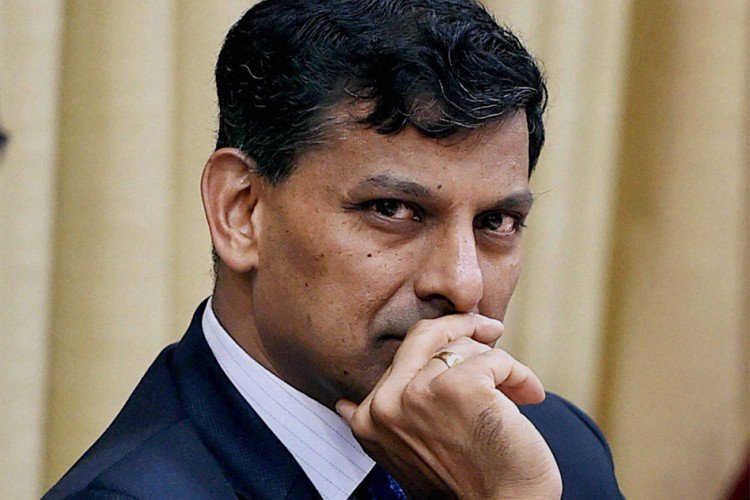
Raghuram Rajan Cracks The Whip On Increasing Debts, Corporates And Banks Fall In Line
10 May 2016 3:25 PM GMT
Editor : Al Arafat Sherfuddeen
Passionate writer about current events, politics and happenings nationally and globally. An agent of communal harmony and an ardent Arsenal fan.
The big corporate houses of India are practising a strange phenomenon of exhibiting growth in the backdrop of a mountain of debts backed by mainly the public sector banks. With Mallya on the run and bad loans reaching to epic proportion, the RBI governor has decided to take stern action. The RBI governor Raghuram Rajan has asked all the banks to clean up their balance sheets and thereby forcing corporations to sell a lot of their assets to pay off their debts. It was a much-needed measure if not done now, can cause destabilisation of the Indian financial system.
So how much were the debts? According to detailed study done by The Hindu :
1.) The top 10 business house debtors alone owe Rs 5,00,000 crore to the banks.
2.) The Anil Ambani-led Reliance Group alone owes Rs 1,21,000 crore of loans to the banks and had an annual interest liability of Rs 8,299 crore against earnings before income tax of Rs 9,848 crore.
3.) Reliance Infrastructure (R-Infra) is sitting on a pile of debt of Rs 25,000 crore as of February
4.) Shashi and Ravi Ruia’s Essar group has gross debt of Rs 1,01,461 crore.
5.) The billionaire Gautam Adani’s Adani group, with Rs 96,031 crore debt.
6.)Manoj Gaur’s Jaypee group’s debt is over Rs 75,000 crore.
7.) G.M. Rao’s GMR group debt-ridden companies are in the red by Rs 47,738 as of March 2015.
8.) The Lanco group has debts of Rs 47,102 crore.
The others include Videocon, Tata and many others who are in debt by more than 30,000 crores.
What has Raghuram Rajan’s whip made them do?
As a part of the clean up act forced on by the RBI governor, the corporates are on a selling spree, they have put multiple assets of theirs on sale to repay the banks.
1.) Assets put on sale by the Reliance Group include about 44,000 telecommunications towers (valued at Rs 22,000 crore) and optic fibre and related infrastructure (Rs 8,000 crore) from Reliance Communications (RCom), its flagship firm.
2.) Reliance has also agreed to sell its cement business to Birla Corporation for Rs 4,800 crore in February and is looking to sell its entire roads portfolio, valued at Rs 9,000 crore, for which three international bidders have been short-listed.
3.) Reliance Capital, with the debt of Rs 24,000 crore has sold stakes, in phases, in its mutual fund and life insurance businesses to Nippon Life Insurance for Rs 3,461 crore to allow the latter to increase its stake to 49 per cent in each of the businesses.
4.) Mr Ambani is also looking to exit the media and entertainment businesses, under Reliance Broadcast Network Ltd (RBNL), for Rs 1,500 –Rs 2,000 crore.
5.) Shashi and Ravi Ruia’s Essar group is looking to sell about 50 per cent stake of its family silver, i.e., Essar Oil’s 20mtpa (million tonnes per annum) Vadinar refinery, for Rs 25,000 crore.
6.) Manoj Gaur’s Jaypee groups has agreed to sell its 20mtpa of cement assets to Kumar Birla-led Ultratech for Rs 15,900 crore and is also selling stake in its land parcels and the Yamuna Express Highway, the group is looking to sell its remaining cement plants for Rs 4,000 crore and its Bina thermal power plant for Rs 3,500 crore.
Other corporate houses have also lined up their assets to bidders in a bid to reduce their debt burden. A much-needed measure given the huge exposure these corporates have on the public sector banks.
Why is this measure so important?
To understand the importance of this, we need to understand how public money is linked to this crisis. The corporates source their debt from public sector banks where the government has a say and has a huge stake. If big corporate houses do not repay the debt it affects the PSBs and who in turn will seek re-financing from the government. The government could end up refinancing the banks from taxpayers money. The money which the government could use for investments or welfare measure runs the risk of refinancing banks due to bad loans to corporates. In the light of this intrinsic link which taxpayers money have and also the much larger macroeconomic stability, it was a much-needed measure from the RBI governor.
The Logical Indian thanks the RBI governor and the banks for taking the tough call. We request the government as people’s representatives to step up the pressure on the corporates to repay the debts.
 All section
All section













